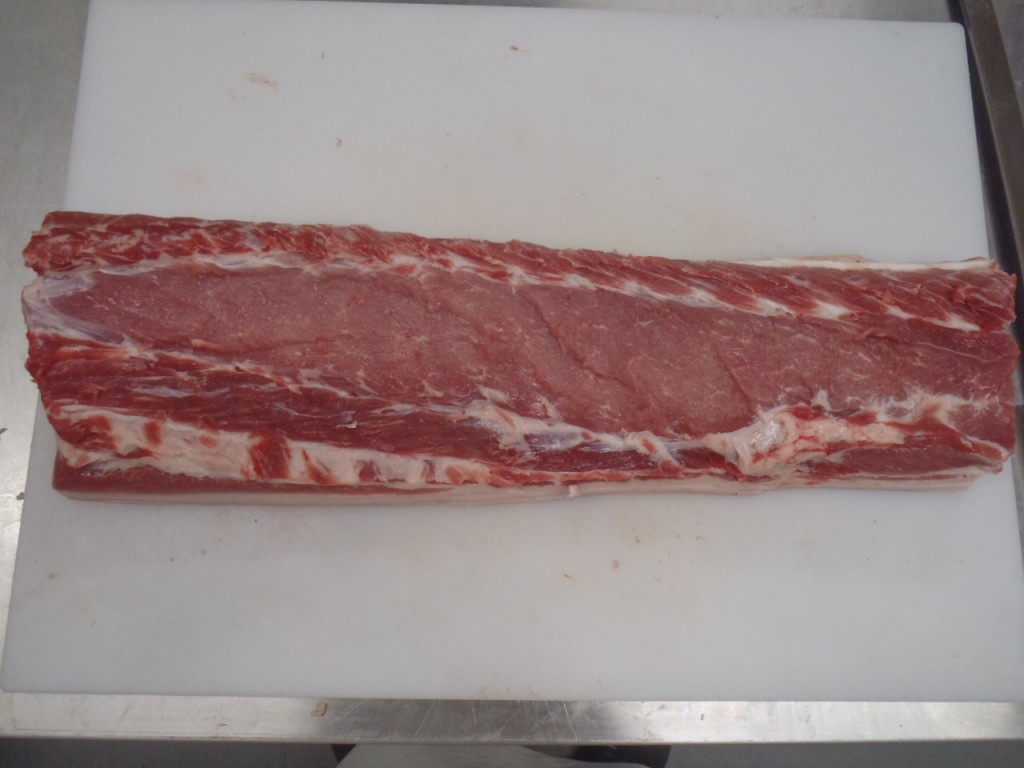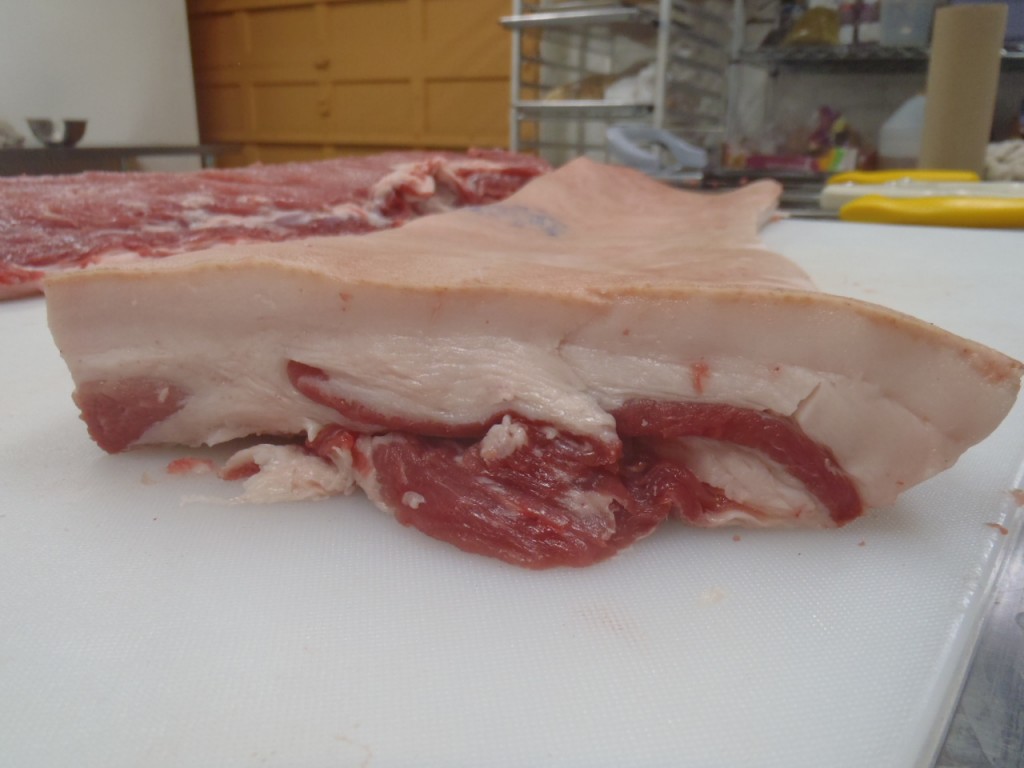You know what’s messed up? Centre-cut pork loin is the most popular cut of pork. At the grocery store it sells better than tenderloin (which is more tender) and way better than shoulder (which is more flavourful, juicy, and versatile). People are crazy for lean meat that comes in uniform, round shapes.
The loin primal is usually cut into chops, notably the centre-cut loin chops. I like a good chop as much as the next guy, but this particular loin is going to become back bacon. We will therefore remove all the bones, the fatback, and skin so that we have what is called the eye of loin.
Here’s the loin. On the bottom left you can see the back ribs.
As with the side ribs, I like to remove the membrane while the ribs are still on the primal. Again, I locate the vein…
…then wedge my steel beneath the membrane and pry it from the ribs.
The loin with the back rib membrane removed:
The picture below shows the feather bones (spinous process) prominently. They’re the vertical ones extending from the backbones.
I follow the feather bones down to the chine bones with my knife like so:
From the chine bone I follow the contour of the back ribs until all the bones separate from the loin in one piece.
 First I separate the lumbar section of the back bone. This will go into stock.
First I separate the lumbar section of the back bone. This will go into stock.
The thoracic vertebrae are removed from the back ribs. For the record, “baby back ribs” is just a marketing term for back ribs. They’re the same thing.
Now we have a boneless loin:
There is a thick layer of fat between the eye of loin and the skin. The meaty eye actually separates quite easily along a natural seam.
Here’s the eye of loin with the removed fatback:
Some gratuitous shots of the fatback:
The eye of loin has two sections. Farther forward on the pig is the rib section. It can be identified by the presence of what is called the cap muscle. On the slice of back bacon below, the cap is the dark muscle on the left. It is a moist, flavourful little muscle.
The section without the cap, farther back on the pig, is the centre loin. It looks like this:
Note that the rib section is not defined by the presence of rib bones, but rather by the presence of the cap muscle. Since the cap does not extend through the entire thoracic section, there are chops that have ribs attached to them but are considered centre-cut chops because they contain no cap.
The loin primal has yielded us the following:
- eye of loin, to be roast or cured to make back bacon
- fatback, to be used in sausage force, or cured and dried, or sliced thin and fried to make scrunchions
- skin for crackling
- back ribs
- chine bones for stock














